Chonde, Malawi
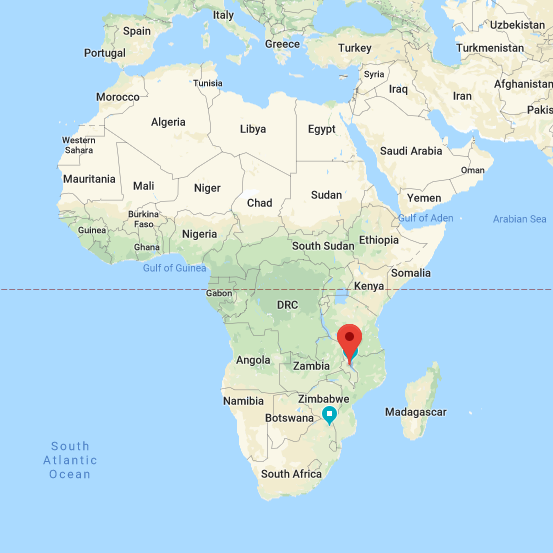
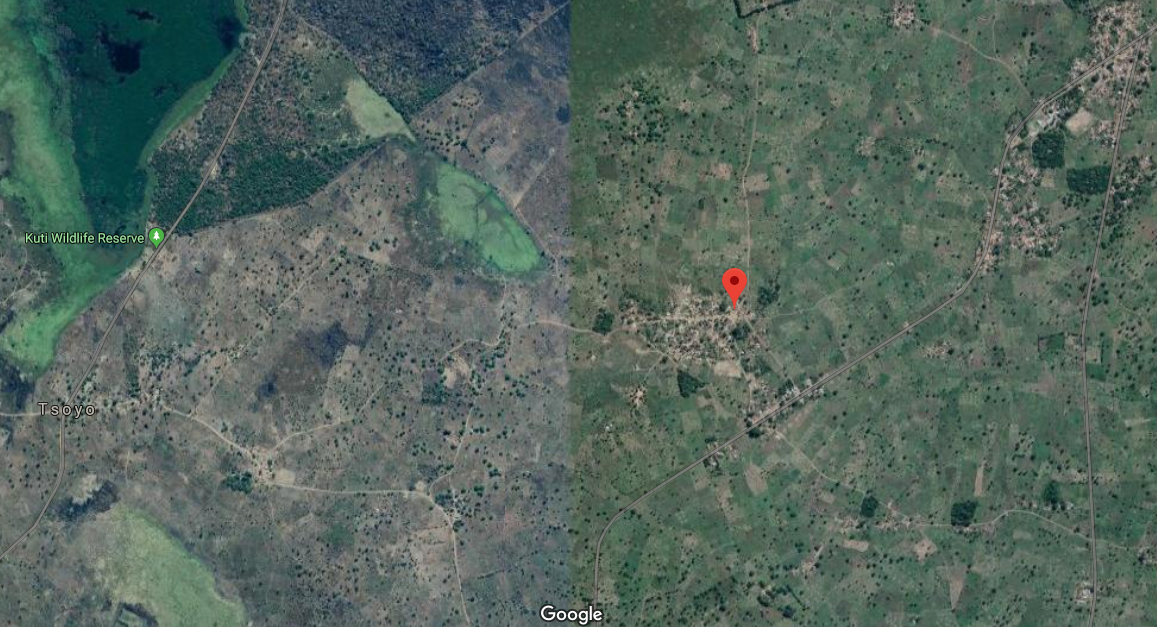
The red pin is the location of house #1. The image shows the deforestation that has occured to fuel “burnt’ bricks and cooking, The green forested area in the upper left is part of a wildlife refuge.

Some facts about Malawi
Geography – Central Africa; bordering Mozambique, Zambia, Tanzania
- High plateau; Lake Malawi (part of East Rift Valley)
- Climate
- Resources
- Lime stone
- Agricultural land (38% arable, 19% pasture, 34% forest)
- Hydropower
- Government
- Former British colony; independence in 6 July 1964
- Republic (unitarypresidentialconstitutional); riddled with corruption
- Economics •GDP (PPP): 25 billion; 1300/per capita

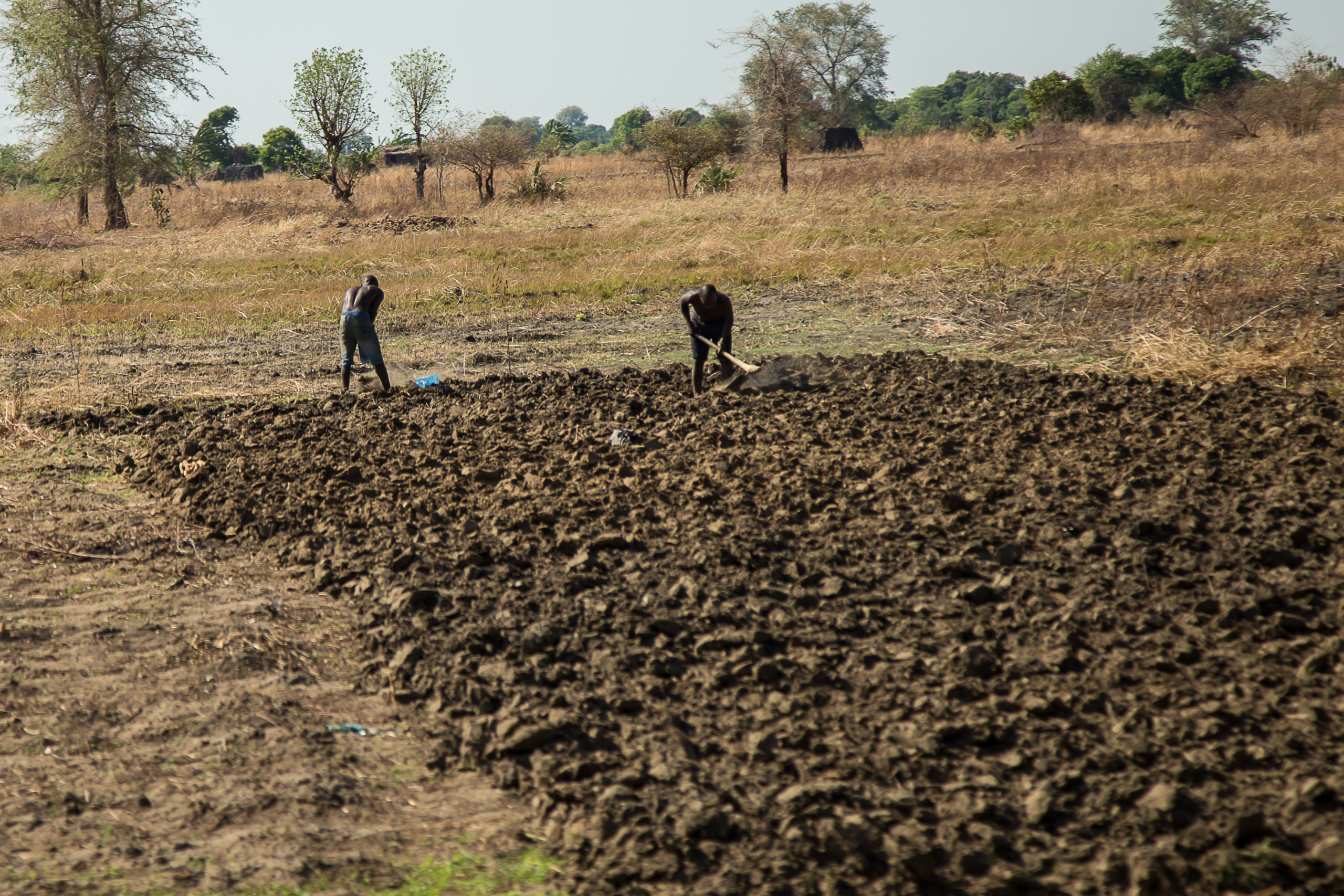
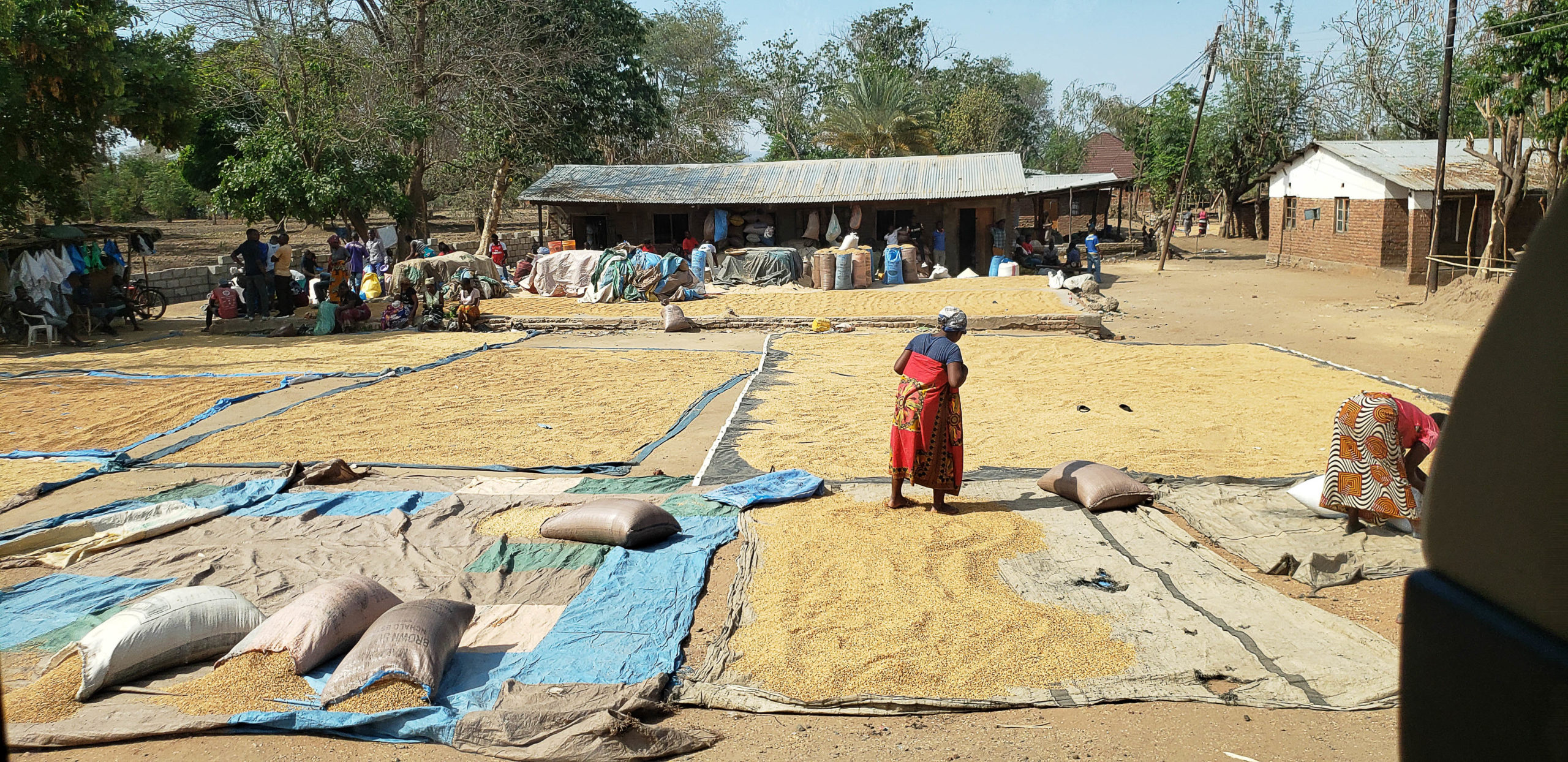
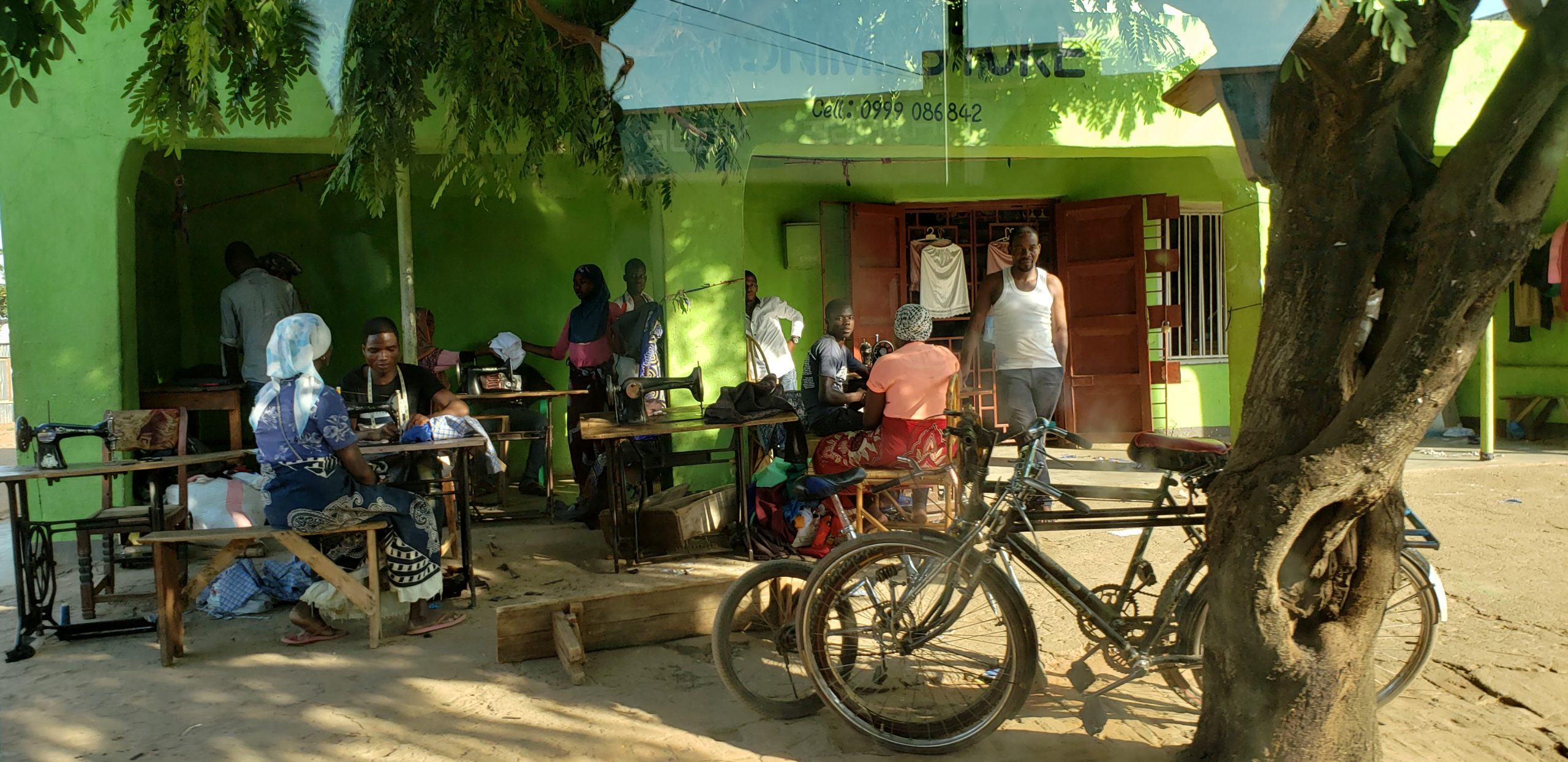





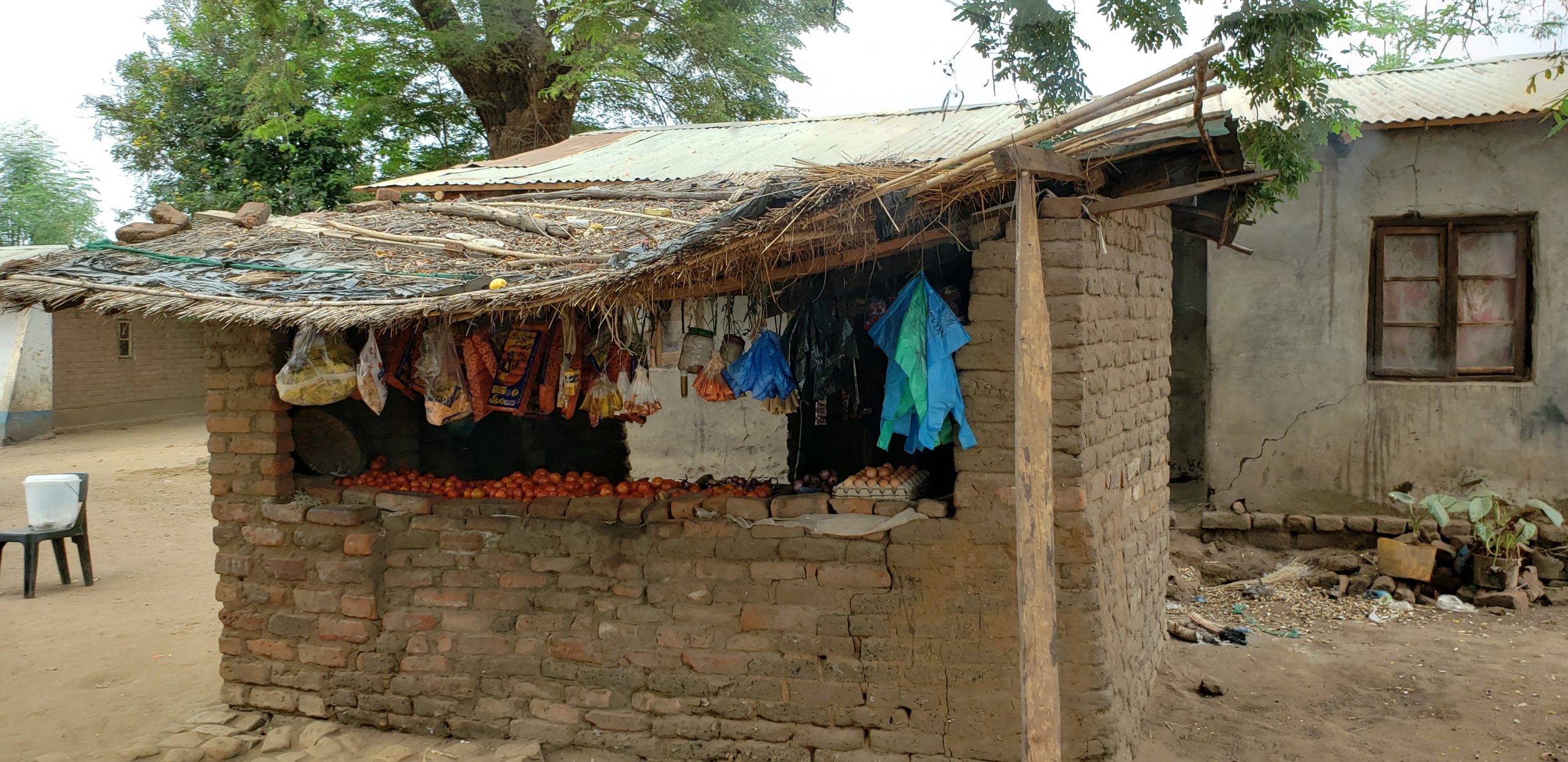




Key facts & figures
- Population: 18.57 million; 128/km2 (333/sq mile) •Ethnic groups: 3 major (Chewa, Lomwe) and many minor
- Language: ChiChewa and ChiTonga; English •Life expectancy: 61.2 years (78.69 years)
- Median age: 16.6 years (USA: 38.1 years)
- Urbanization: 16.3% live in cities (USA: 82%)
- Unemployment rate: 7.5%
- Population living below poverty line: 52.4%
- Median annual income: $150 (USA: $61,372), about 41 cents a day.
Symbols of Social Stratification. Shoes are expensive and often the local people are barefoot even in the cities.
Read more: https://www.everyculture.com/Ja-Ma/Malawi.html#ixzz67M2gxP8F
Housing in Malawi
A severe lack of homes
- Approximately 21,000 new units are needed every year for the next 10 years to meet housing demand – this far exceeds supply.
- In the urban areas, many people live in slums characterized by poor water and sanitation facilities, no electricity and poor road networks. There are very few institutions dedicated to eliminating poverty housing in Malawi.
78% of families in Malawi live in substandard housing characterized by mud walls and grass thatch houses (Population and Housing census, 2008)
Mud bricks – dissolve when the rain comes. .
Habitat for Humanity in Malawi
Since 2008 Habitat for Humanity Malawi with funds from the Gates Foundation has supported 681 Individual Orphans and Vulnerable Children (OVC’s) with improved shelter, homeowner training on HIV prevention, malaria prevention, and property rights & will writing in the Mulanje and Salima districts of Malawi
Cost estimates
Three room house and VIP latrine for six (on average) OVC household members •Total cost: US $6,500 (includes 15% administration fee)
Cost break down •Construction materials: $5,000 •Transportation: $500 •Mosquito nets: $10 •HIV prevention training $20 •Water and sanitation training: $10 •Wills and inheritance training: $60 •Labor: $900
Habitat for Humanity- Malawi Target Groups
- Low income households living on less than $1.00 a day •Orphan and Vulnerable Group Households i.e.:
- Children who have lost one or both parents
- Households headed by a child or grandparent
- Households who are homeless or living in poverty housing
- Households vulnerable to property grabbing
- Households with poor access to health, property & psychosocial care
The receiving families
Mother
Widow
5 children
2-10 years
Mother
Widow
4 children
4-10 years
Grandmother
3 children still living at home (unmarried)
1 grandchild
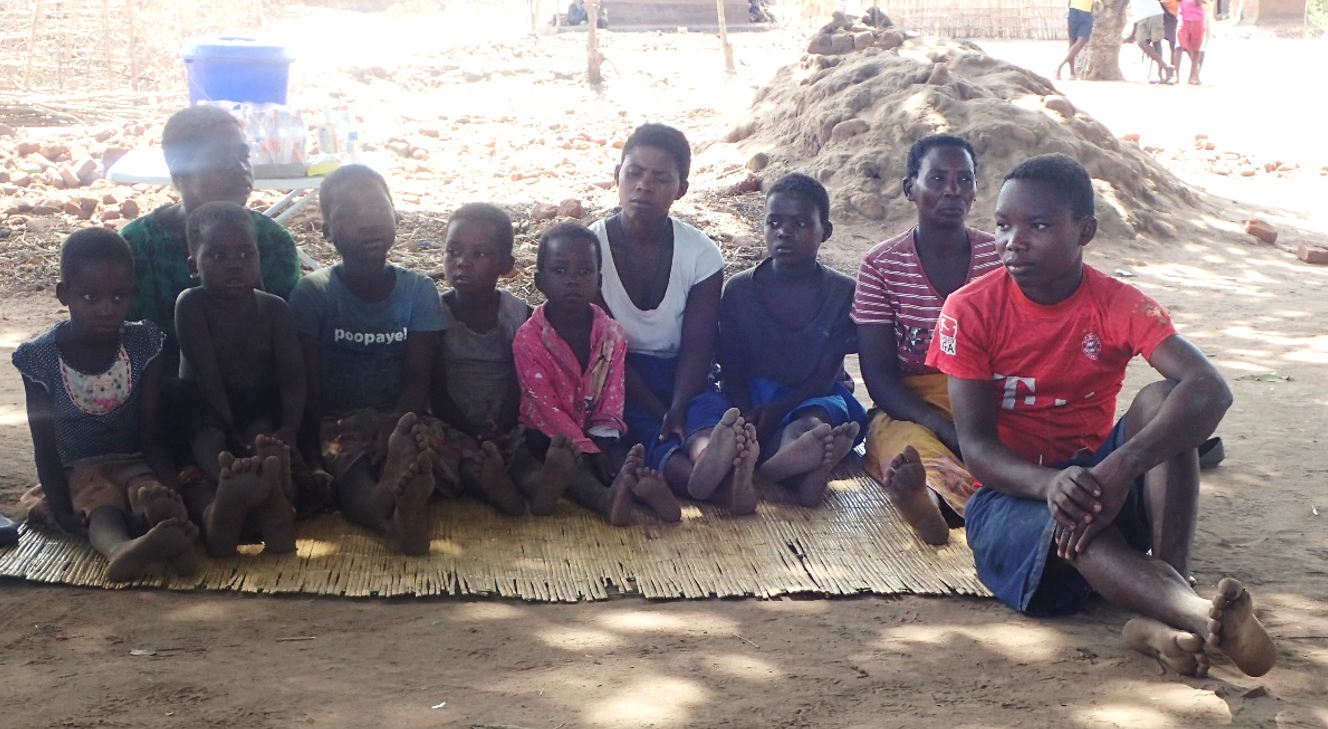
Home build – Local masons
Home build – Home owners
Home build – Extended family
Home build – Volunteers
Home build – Training
- Juneau: 150 children; 4 teachers; $5000 per child per year
- Salima: 1000 children; 8 teachers; $1000 “grant” per year for the entire school (most years)
Orphans and vulnerable families
- The “orphans and vulnerable groups” program started in 2009 and to date, HFHM has constructed 200 houses for the vulnerable families in six communities.
- The services include:
- Improved housing: HFHM construct two, three or four-room houses for vulnerable families. In addition, each family is provided with a ventilated improved pit-latrine to improve sanitation and hygiene.
- Malaria prevention training: HFHM provides three insecticide-treated mosquito nets per family. Families are also trained on good sanitation and hygiene practices to prevent diseases, including malaria.
- HIV prevention training: The training is aimed at preventing new infections arising from sexual exploitation, especially of the girls and caregivers.
- Vocational skills training: It is provided to older OVC, especially those who dropped out from school. The package includes provision of tools and equipment like carpentry or sewing machines.
- Property and inheritance rights training: It aims to protect the OVC from property grabbing. The training is offered to OVC caregivers and gate keepers.
Questions
Home building process
Our daily schedule was laid out like this: (of course this was on Africa time…)
- Breakfast at 6:30 pm
- Leave for worksite at 7:30 am
- Break at 10:00 am
- Lunch at 12:00 pm
- Break at 3:00 pm
- Leave for guesthouse at 4:30 pm
- Dinner at 7:00 pm
- Evenings free
Workday Program
- Mixing motor (matrope)
- Carrying water (madzi)
- Passing bricks (Inyerrowa)
- Laying bricks
- cleaning the area
- Passing mortar
- sorting bricks
- tuck pointing bricks
- Hauling soil for backfill
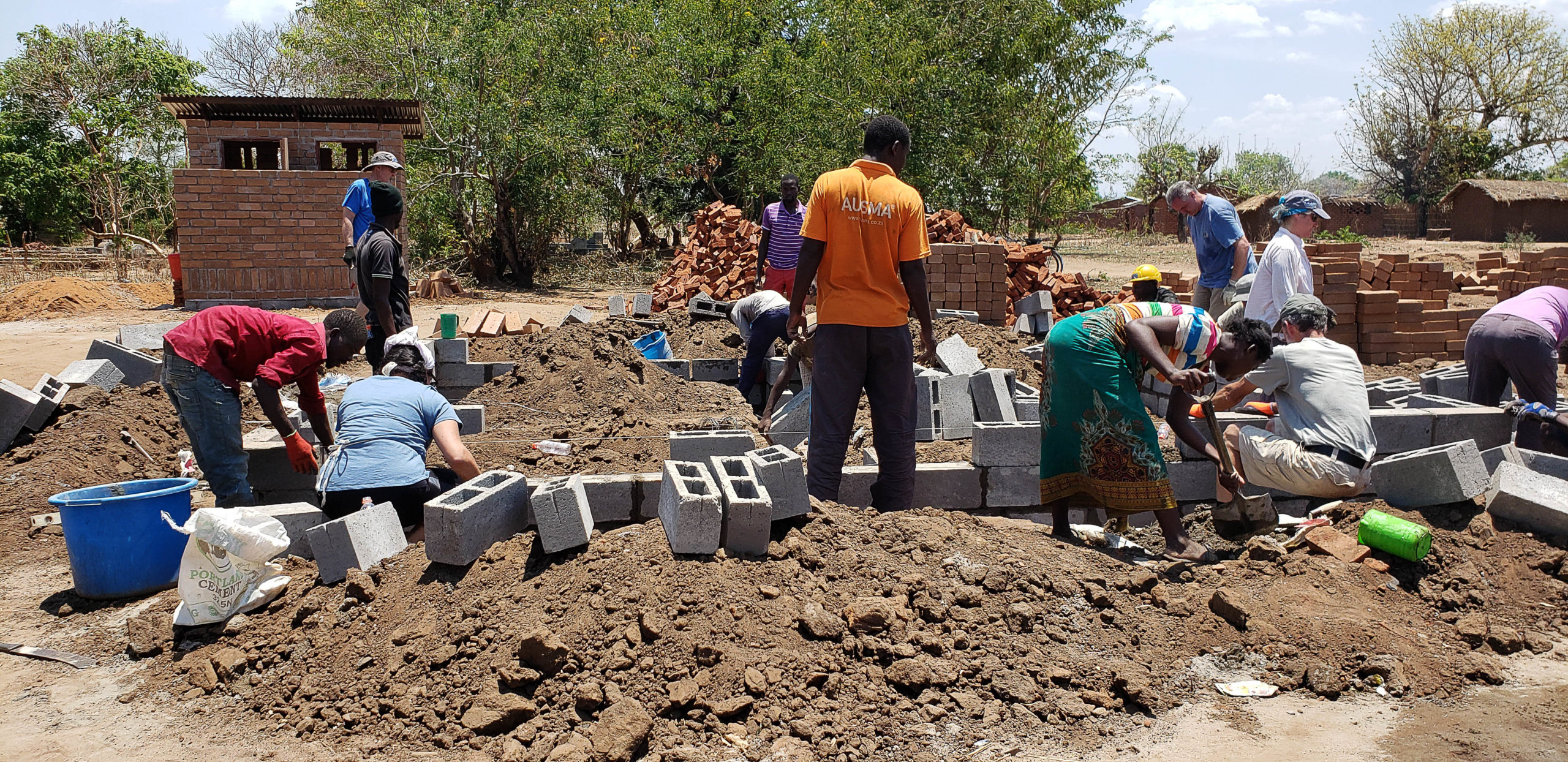
The manual brick making process.
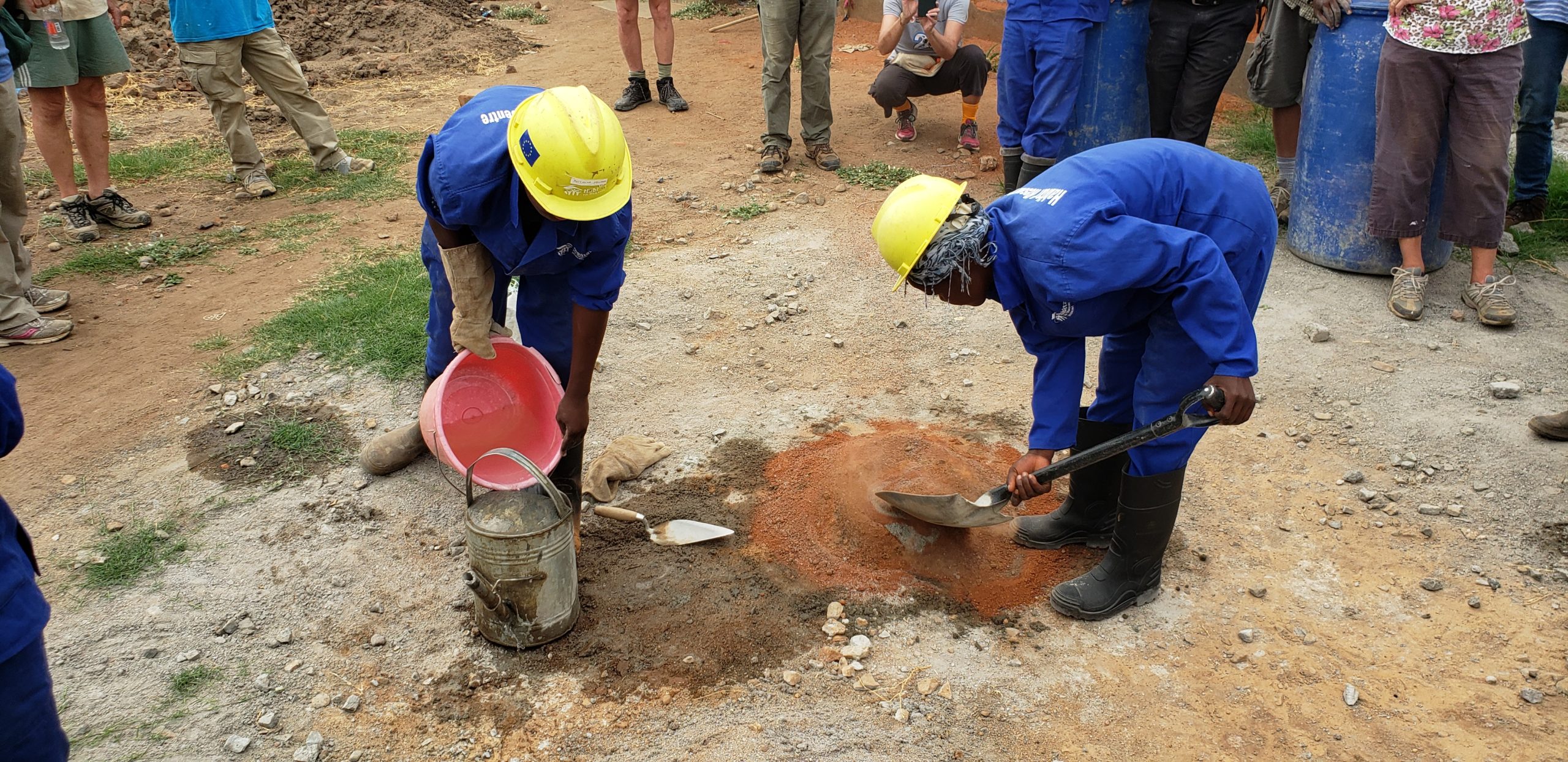
Mixing cement for blocks 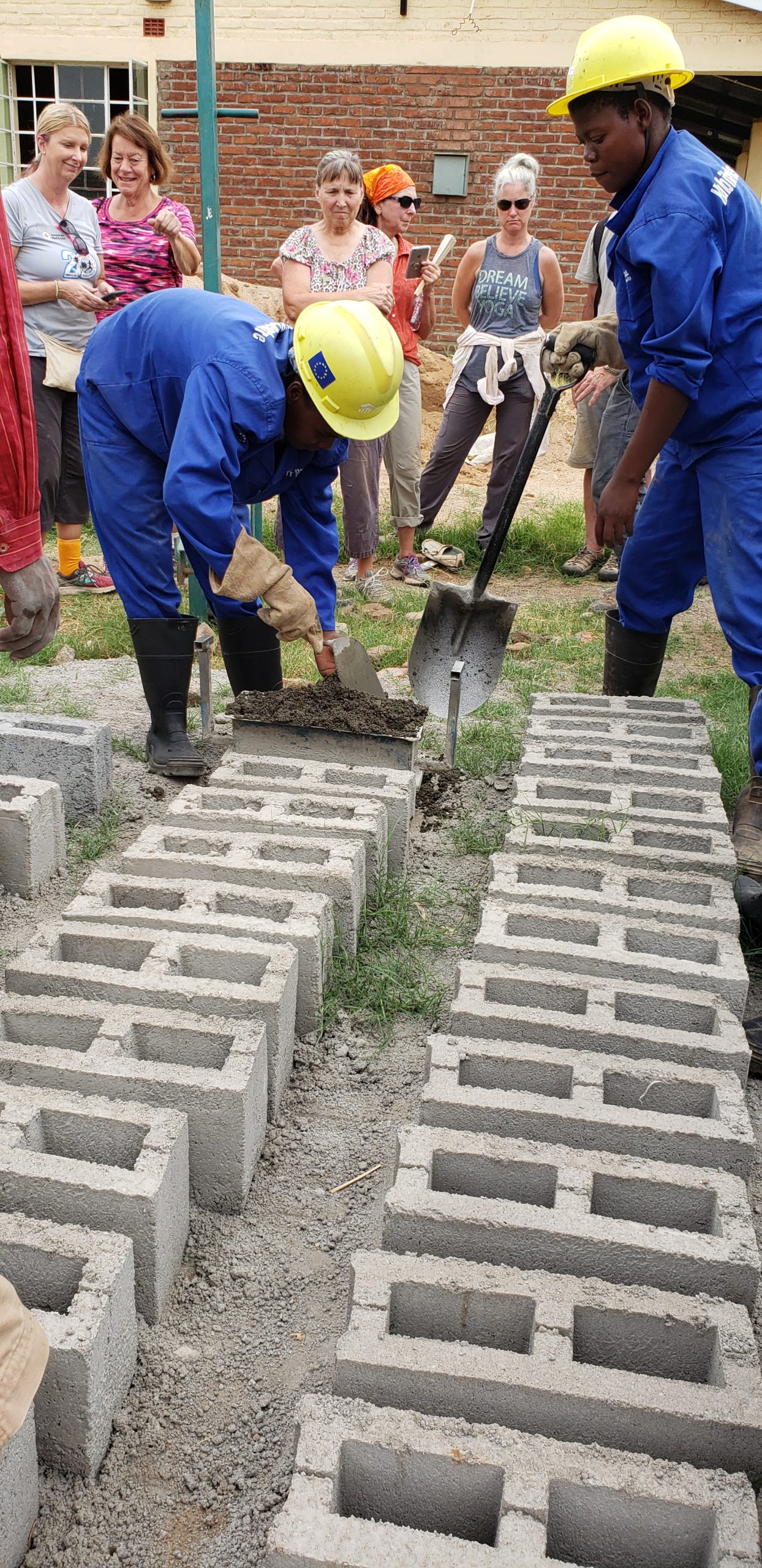
FIlling the form 
Removing the form 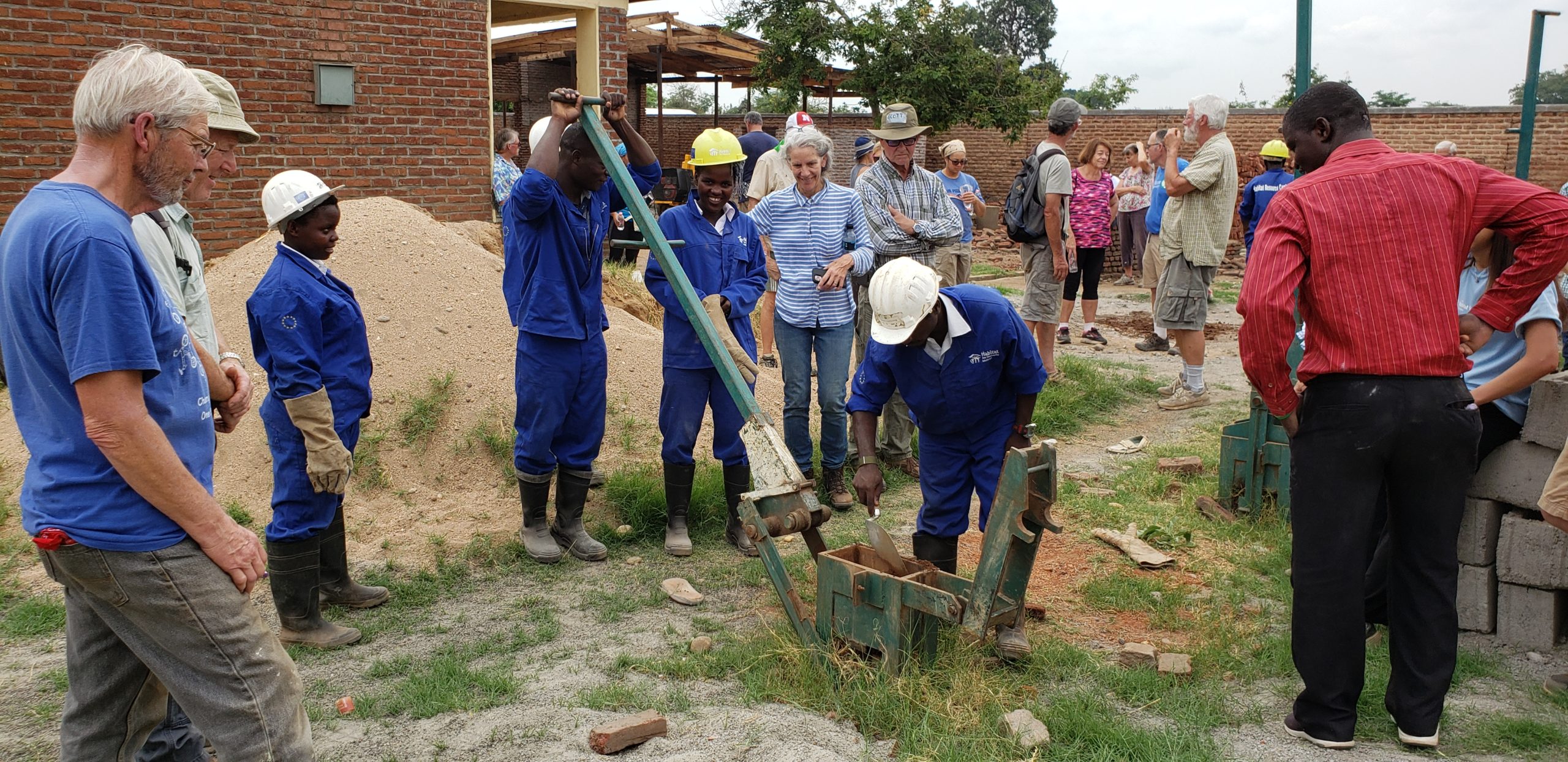
Why not use the “Burnt” bricks?
insert link to article about burnt bricks.